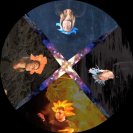ANAT was incorporated in 1988, but started life in 1984 as an art and technology event titled ‘Interface’ which was developed by the Experimental Art Foundation for the Adelaide Festival . This led to a research‐based pilot project initiated by the Experimental Art Foundation and the South Australian Ministry of Technology in 1985, and funded primarily through the Commonwealth Employment Program. From the outset, ANAT was never intended to be a large institution, but to be light and adaptable, able to change quickly with the developments of the rapidly changing environment in which it works.
ANAT has made many groundbreaking achievements across two decades of disruptive technological, scientific and cultural change:- TISEA: The third ISEA, held in Sydney in 1992, was a significant watershed event for Australia, setting the scene for digital arts and creative industries.
ANAT’s ground breaking digital media work with a focus on mobile phones including Media State, Mobile Journeys, Miniseries, Pixel Play and Portable Worlds, all of which have heavily influenced the development and use of mobile phones and the creative industries today.
Developing of the Synapse residency program and database from the Scientific Serendipity program to become a world leading cross-disciplinary project for art/science collaborations.
ANAT’s collaboration in three ARC Linkage research projects. The first with artist Mari Velonaki led to the Centre for Social Robotics and developed new career paths for artists in robotics research.
ANAT’s Super Human suite of events in Melbourne in 2009 brought together world leaders in the field of art/science collaboration for a sophisticated and deep exploration of the augmented human.
ANAT’s Dome Lab and related presentation of this medium across 2009 and 2010 broke new ground in research for frameless cinema, securing ISEA2013 for Sydney.
From ANAT's website




